
Your boy is laid up with sciatica this week, so it’s Sergey Time as FNY’s correspondent checks in with some Bronx Art Deco buildings.
By SERGEY KADINSKY
Forgotten NY correspondent
HAVING returned from a vacation in Miami Beach where I slept in an Art Deco-style hotel and met New Yorkers who moved to the Sunshine State for climate, political, and financial reasons. Perhaps I should follow them but then I thought better of it. Having documented this architectural style in Sunnyside, Kevin finding it on Staten Island, and Gary Fonville in Washington Heights, we are mindful that the biggest collection of Art Deco buildings in this city can be seen on the Grand Concourse. If you know where to look, there are pockets of this style in other locations across the Boogie Down borough.
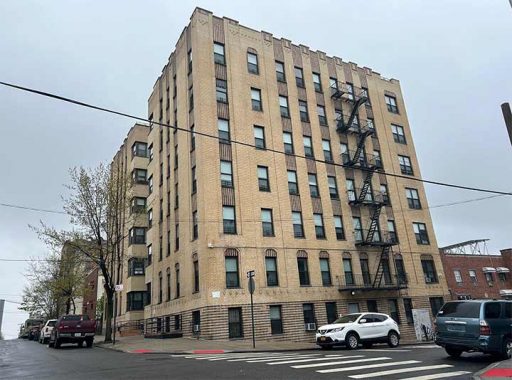
On East 175th Street, a block north of Crotona Park, are three Art Deco buildings that survived the arson wave of the 1970s to host new generations of dwellers. 855 East 175th is managed by Volunteers of America, a social services nonprofit that helps homeless individuals secure housing and employment. In the 1980s, this building was hollowed out by decay, its entrance covered in cinder blocks as it stood amid empty lots.

The entrance that greets clients and residents also survived into this century but the lobby inside was entirely reconstructed with a functional appearance.
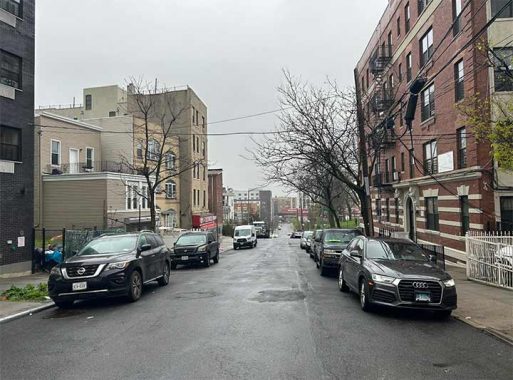
Looking east on this street, the topography descends towards Boston Road with a mix of old houses, attached infill townhouses, and a couple of prewar apartment buildings that also survived to the present day. Boston Road is a colonial-period route that connected Manhattan to Boston. A portion of it lies in the shadow of the elevated 2 and 5 trains.
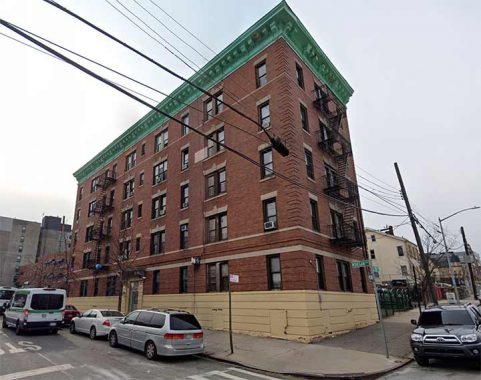
Looking north on the one-block Mohegan Avenue, we see the cornice of 1841 Mohegan. Between it and the Art Deco building were other apartment buildings that were burned and then demolished, replaced with three-story walk-ups that have no distinctive architectural features. Mohegan Avenue’s northern end abuts the Cross-Bronx Expressway, which was shoved through this neighborhood in the 1950s.
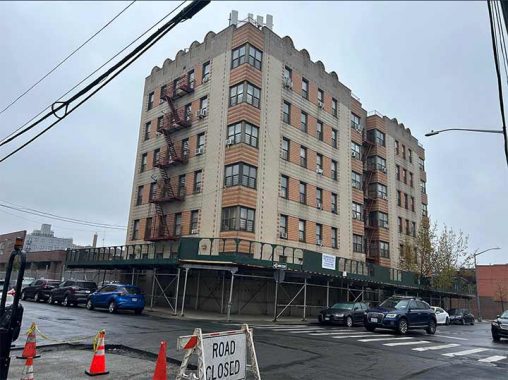
The second example of Art Deco on 175th Street is the corner building 1809 Marmion Avenue, whose ground floor was covered by unsightly construction scaffolding at the time of my visit. To avoid confusion with Marion Avenue in Fordham Heights, Marmion was given a similar-sounding name. Its origin is a romantic story in poems written by Sir Walter Scott that was published in 1808.
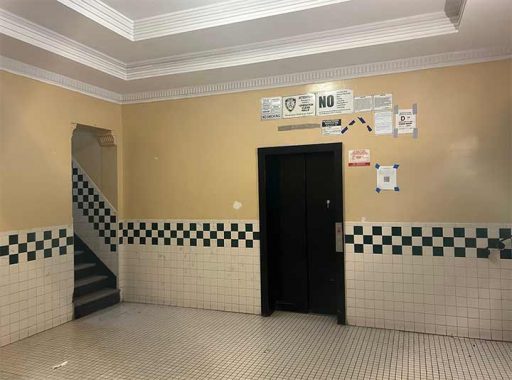
As with my Sunnyside page, I wanted to see the lobbies of these buildings but in this case, there wasn’t much to see. Bathroom tiles, butter color paint and warning signs greet residents and visitors of this Art Deco survivor. Following its construction in 1936, the sidewalks around it had shrubs and trees, but today it is a desert of concrete.
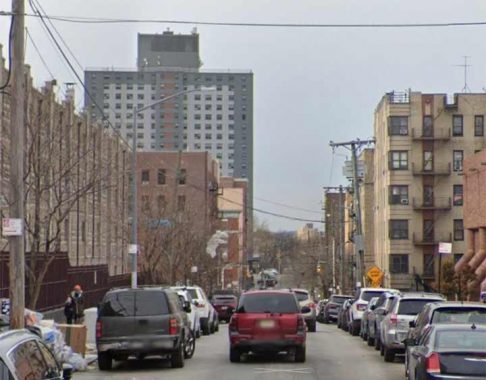
Looking west on E. 175th Street, the high-rises of the NYCHA Murphy Houses dominate the skyline. Closer to the ground, it is an uninspiring scene on a cold spring afternoon. The south side of the street had gray cinderblock homes that resemble a cell block. This is HELP Bronx Crotona North, a transitional housing facility for employed homeless individuals. Behind the gray facade is a green courtyard and entrance facing Crotona Park. It was built in 1991 on an empty lot.
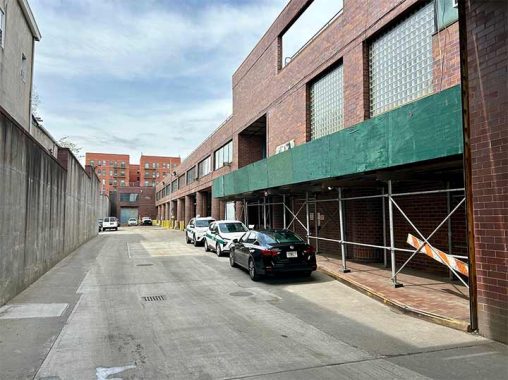
The sidewalk opposite from this gray building has bricks matching DSNY Bronx Borough command, a garage for sanitation trucks serving this borough. Built in 1990, it has the appearance of a fortress shielded from the neighborhood. The only decorative feature on it is a panel of bricks adjacent to our next apartment building. This garage was co-named for Rafael Concepcion, 36, who tragically died on the job in 2006.
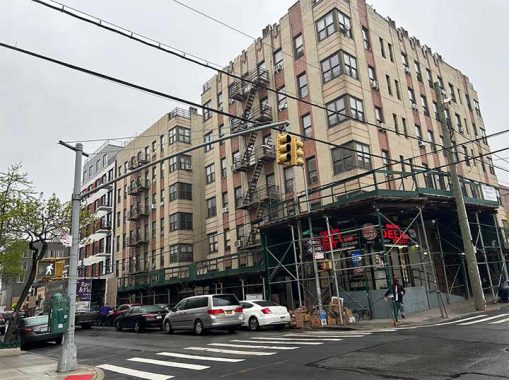
The final example of prewar Art Deco on this street is 765 E. 176th, which also had the ugly scaffolding concealing its entrance and the corner bodega. The tax photo from 1940 had a dog inadvertently within the frame. On my visit, a young resident was standing with his pitbull on this corner. Coincidence?
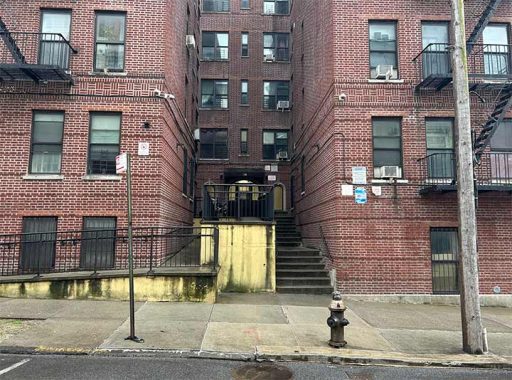
Diagonally across from this Art Deco building is the much less extravagant 756 East 175th Street, covered entirely in red bricks. What interested me is its effort at accessibility with switchback ramps for wheelchairs and walkers. Would it have been easier to carve out a street-level entrance instead? This building is also a survivor, having been encased in cinderblocks during the abandonment decade of the 1980s.
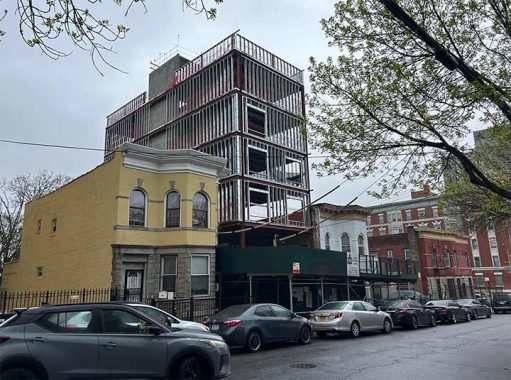
Down the block on East 175th, there were three identical townhouses with cornices and protrusions. Recently, the middle building was demolished in favor of a taller infill that lacks the charm of its predecessor.
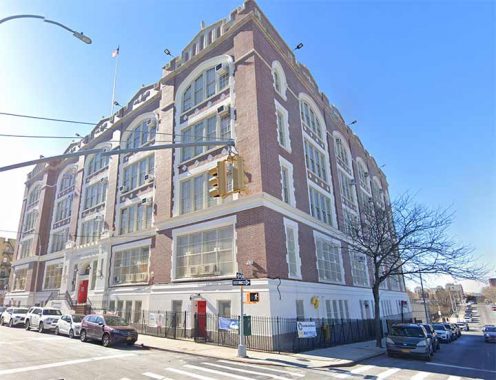
I could not resist deviating from my route to document P.S. 44, a Collegiate Gothic structure designed by prolific public school architect CBJ Snyder. This school is co-named for Civil War hero Admiral David G. Farragut, whose name also appears on the playground next to this school. One particular student enrolled here in 1953 had a record for truancy, which wouldn’t be his last run-in with the law. His final crime was assassinating a president. More notable alumni of this school include Dr. Jonas Salk, Hall of Fame ballplayer Hank Greenberg, and comedian Red Buttons.
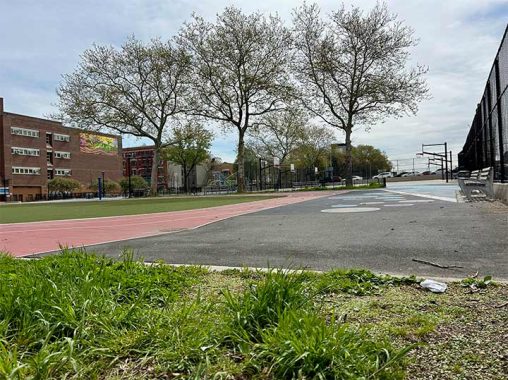
Farragut and Prospect playgrounds were built in tandem with Cross-Bronx Expressway, covering the highway for a block. Originally a paved field, Prospect Playground was given an update in 2022 with plants and colors on the surface. As this playground hides the traffic from view, it raises the question why the rest of the highway can’t be decked to reconnect neighborhoods along its route.
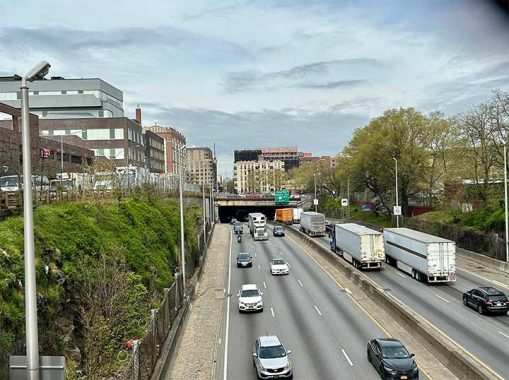
There are critics who argue that the cost of decking the expressway is too high, fearing a repeat of Boston’s Big Dig but looking west toward the tunnel underneath Prospect Playground, it appears easily possible. I can imagine more parks, schools, and buildings covering up this unsightly and unhealthy ribbon of congestion.
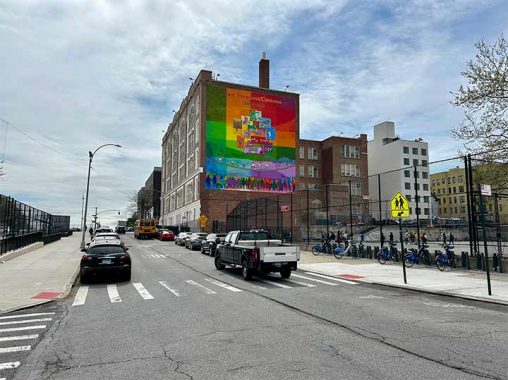
The back of P.S. 44 has a mural that answers the neighborhood’s name. It is north of Crotona Park, east of Tremont, and south of Belmont. Artist Tova Synder describes this block as “East Tremont/Crotona.” Unlike Queens, whose neighborhoods used to be independent towns and villages prior to 1898, neighborhood identity is not as strong in the other four boroughs and their boundaries can be blurry.
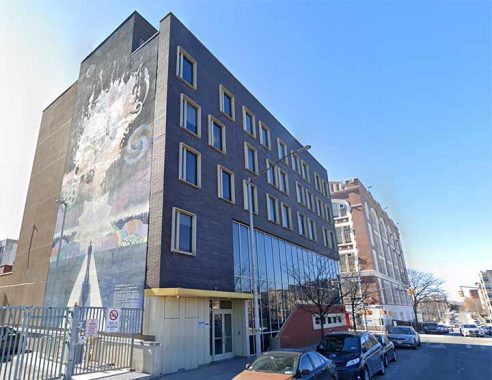
Next to P.S. 44 is VIP Community Services, which offers drug addiction treatment and a men’s residence in this postmodern building. In 2014, it was beautified with a mural painted by its clients, under the supervision of artists Marc Evan and Raul Ayala. The work was organized by Groundswell, which has murals throughout the city.
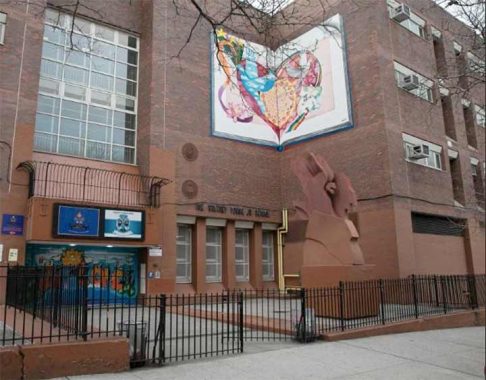
Synder also has a couple of murals a block to the north on Prospect Avenue atCommunity School 211 The Whitney Young School. Built in 1975, its functional design had nothing creative to offer prior to the murals. The brown steel sculpture that matches the building’s bricks is Richard Hunt’s 1982 work titled Abstract.
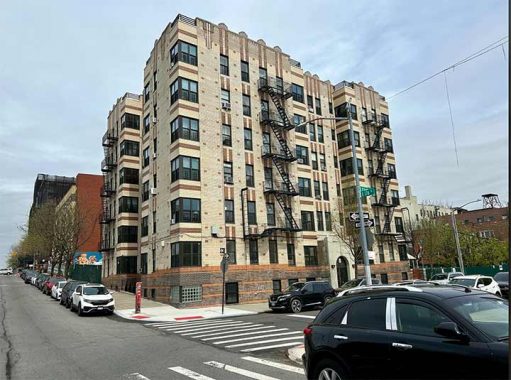
Next to the playground at 1879 Clinton Avenue is the neighborhood’s fourth Art Deco building, with orange and black bricks in stripes between windows. When it was built in 1937, the name Ann Rose was carved above the entrance. Perhaps the developer’s wife, mother, or daughter? Like earlier examples in this essay, this one stood alone on its block at the end of the last century and is also an affordable development, run by the nonprofit Aquinas Housing Corporation.
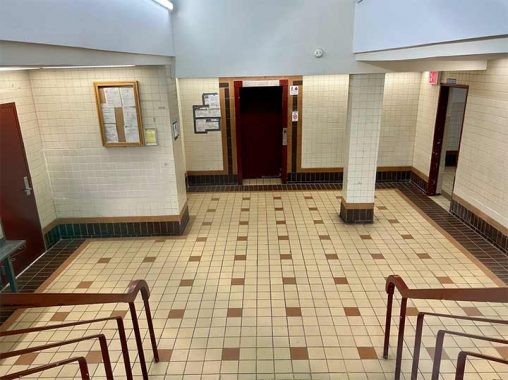
As with the earlier example, the lobby of the Ann Rose has so many tiles that it resembles a bathhouse. Perhaps it had an Art Deco interior prior to the 1970s and the present look was done with a tight budget without consideration for history and art.
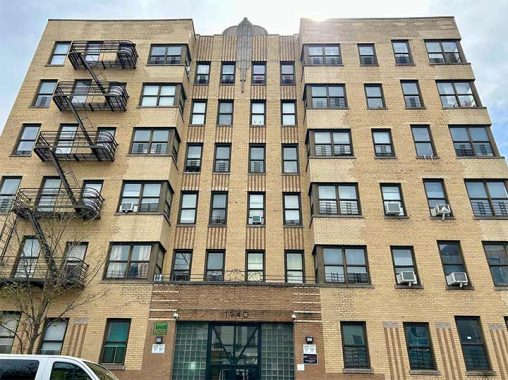
Up the block from the Ann Rose is 1940 Clinton Avenue, which has a concrete sculpture parched between the middle windows of its top floor on an eclectic block that includes century-old single-family houses, walk-up apartments, and infills.
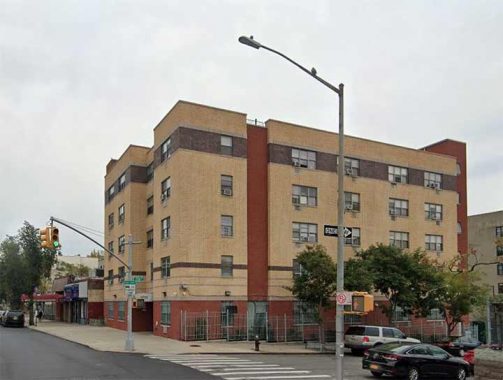
A block to the west is another building where homeless individuals transition back to having a home. In 2003, an empty lot at the corner of Crotona Avenue and E. 176th Street was developed as Abraham Plaza. It offers 40 studio apartments as Supportive Housing that offers on-site services to its clients. There are a cluster of such developments in this neighborhood.
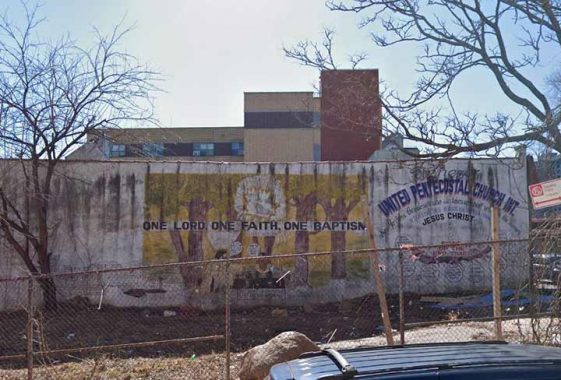
Next to Abraham Plaza are a couple of small Pentecostal churches. Ebenezer United has a pair of murals on its side wall, one with the quote from John 3:5 about being born again with a call for repentance from Acts 2:38, and the larger mural announcing the impending return of Jesus Christ in light of society’s moral decay.
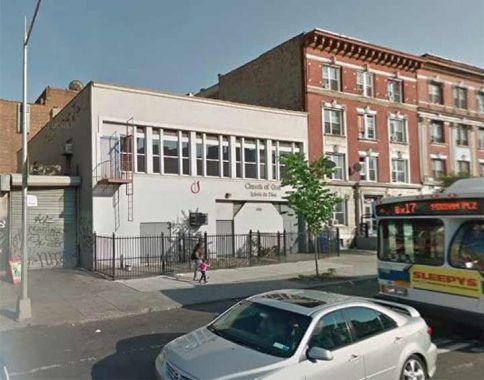
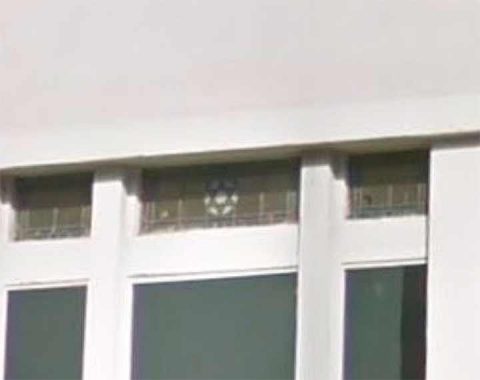
A block to the north, closer to the intersection with Tremont Avenue is Church of God at Crotona, which offers bilingual services in Spanish.
A closer look at the church’s second floor window reveals the Star of David that testifies to its previous use as Chevra Ahavas Achim, an Orthodox synagogue that dwindled after the expressway was built and sold the building in 1969. Throughout the borough one can find such “churchagogues,” as Matt Green calls them.
|
|
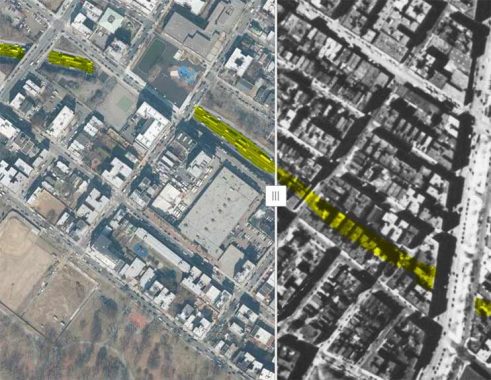
The Cross-Bronx Expressway had a tremendous impact on the landscape of this neighborhood, as seen in this Then & Now interactive map published by the city. Thousands of families were displaced by the highway even though Robert Moses could have routed it through Crotona Park two blocks to the south. The impact of the highway on the area was very detrimental, but it wasn’t devastating. Nearly all Jewish families moved away after its construction, Puerto Ricans moved in and it remained a vibrant working-class neighborhood. It was the disinvestment, financial deficit, and crime wave of the late 1970s that gave East Tremont the appearance of postwar Berlin.
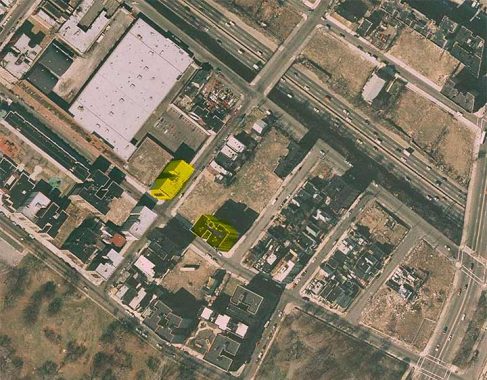
Dozens of burned-out buildings were subsequently demolished, leaving a few hardy survivors from the 1930s. In this aerial survey taken in 1996, I highlighted two of them, the Art Deco holdouts awaiting restoration and new residents. If these buildings could talk, they would begin their stories in Italian and Yiddish, followed by Spanish, describing the decline and revival of this block of East 175th Street.
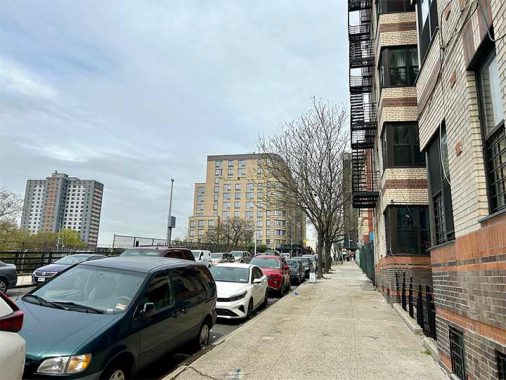
I thought that I was done with this cluster of Art Deco buildings on 175th Street but then heard construction noise a block to the west. I was impressed to see a newcomer, 656 East 176th Street: a post-millennial newcomer.
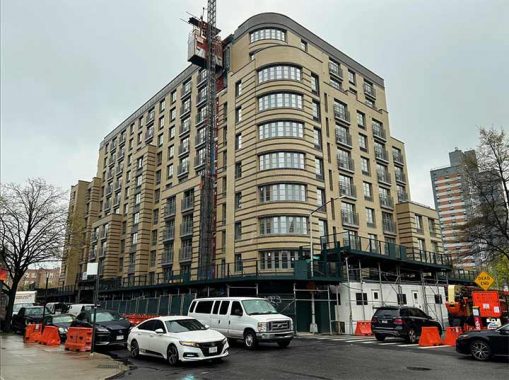
This lot once had an Italianate apartment building that burned during the arson wave of the late 1970s. The property then served as a parking lot before the city’s Department of Housing Preservation & Development (HPD) teamed up with its owner to build 153 affordable units here. There is another Gen-Z Art Deco building in the Bronx, El Jardin de Selene, documented in the Melrose Commons essay.
Hoping to see more Art Deco revivals in the years to come!
Sergey Kadinsky is the author of Hidden Waters of New York City: A History and Guide to 101 Forgotten Lakes, Ponds, Creeks, and Streams in the Five Boroughs (2016, Countryman Press), adjunct history professor at Touro University and the webmaster of Hidden Waters Blog.
As always, “comment…as you see fit.” I earn a small payment when you click on any ad on the site. Take a look at the new JOBS link in the red toolbar at the top of the page on the desktop version, as I also get a small payment when you view a job via that link.
4/28/24

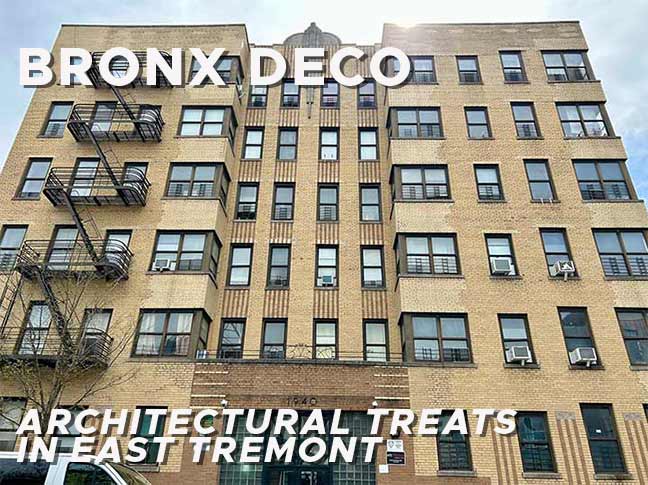
11 comments
We lived at 1757 Anthony Ave, which was just north of the Cross Bronx, when the road cut the street off. We moved in 1960 to a NYC housing project in Inwood. My uncle continued to live there until 1967. He had a two bedroom apartment with a large living room, French doors, a beautiful pre-war building. The neighborhood was destroyed by the road and eventually that building was abandoned and demolished.
Did I miss something? Who was the student who assassinated a president? Was 1953 he was a student. Had to be Oswald. Right? Or did I read it wrong?
Thanks in part to a complete nut job of a mother, that rather infamous P.S. 44 student attended a total of 12 schools before dropping out at 16.
Another Quality article from Sergey.
Lee Harvey Oswald attended P.S. 44 in 1953 which is so ironic because that same year, P.S. 44 graduate Red Buttons released a song that would become a best seller & his theme song. Its title was “Strange Things” :
https://www.youtube.com/watch?v=Rips1aIEGzE
Coincidences like this are “strange things” that become little-known footnotes to historic tragedies.
I have a feeling that a lot of the congestion on the Cross Bronx comes from the interchange with the Major Deegan Expressway.
Trucks coming onto the Cross Bronx to go to New Jersey enter on the far right – and they almost immediately have to move over to the left lane in order to be get on the upper deck of the George Washington Bridge (they aren’t allowed on the lower level). Crossing ALL of the traffic lanes in so short a distance is GOING to cause delays….
Did you miss something?Yeah,you sure did,Mahoney.
Like not even a basic grasp of American history
Truly forgotten is the original route of the Bronx River Parkway from 233 Street to Southern Boulevard, some parts which can still be seen.
Great entry, Sergey. I remember reading something about a movie studio in the Bronx that existed many years ago. My research revealed it was the Biograph Studio, later known as the Gold Medal Studio at 807 E. 175 Street, the site of the DSNYC facility. One of the last movies filmed there , at least partially, was 1959’s “Odds Against Tomorrow” starring Harry Belafonte, Robert Ryan and Ed Begly. The film also included a young Wayne Roger’s and Cicely Tyson.
Also filmed at Biograph: The two-season situation comedy series “Car 54, Where Are You?”:
https://en.wikipedia.org/wiki/Car_54,_Where_Are_You%3F
Brooklyn was also formed from separate towns, as was Queens.